|
Two blogs weren’t enough to cover the myriad questions we get about our RV lifestyle. The questions keep coming our way, and it only makes sense to answer them in a public forum since they tend to recur. So, here we go. Do you ever find things on the floor after arriving at your destination? The simple answer is yes. We arrived at a campsite, opened the trailer, and found a ceramic mug on the floor in pieces. We also found a glass tumbler once, miraculously still in one piece. We’re happy to report these are not common occurrences. We’ve learned how to pack our interior belongings in a way to prevent them from falling from cabinets. We use spring bars in our pantry to keep canned goods in place and in our refrigerator to keep eggs and other things from falling out in transit and making a mess. Securing any loose items is key before we drive anywhere. What do you do in storms? We got this question in Michigan a few days before a tornado warning came through. Before that event, we hadn’t really thought about storms. We do our best to avoid driving in them, but sometimes they do occur while we’re in a location. We weathered windstorms, for example, by closing our slideouts and hunkering down. When the noise got to be too great, we loaded into Gulliver and drove into town for the afternoon, leaving Tagalong to fend for himself. He did fine. In northwestern Michigan, we stayed at a campground that had “Storm Shelter” signs on its concrete public restrooms. At many campgrounds, the best place to stay safe from a storm is in structures like those. If we were to encounter a dangerous storm while boondocking somewhere and didn’t have time to relocate our rig, we’d likely secure it as best we could, pull in the slideouts, and leave it to find shelter elsewhere until the storm passed. What about shoes? Honestly, we don’t need a lot of shoes. I work from the trailer, so most workdays I’m in my slippers or flip-flops. Bob typically wears sneakers or sandals. But the makers of our rig created it with hidden shelving in the back of our bedroom closet that allows for storage of extra shoes, if needed. How do you prevent being in vacation mode? I transitioned to a remote job before we moved into the trailer. That turned out to be a good stepping stone for me to get used to working in a different location from my team and connecting via video calls and instant messaging. My work is part of our lifestyle, so we’ve figured out a way to prioritize it while enjoying traveling to different parts of the country. We move on weekends for the most part. After arriving at a location and getting set up, we like to take the rest of the day and possibly the next to explore the area. Come Monday morning, I’m back to my typical work week, and Bob finds plenty to do to keep busy. It’s a win-win, as the job helps keep us in this lifestyle. How long do you plan to full-time RV? We don’t have a definite end date in mind. We still have a lot of the country to see, and we’d like to keep doing what we’re doing until we get sick of it or are physically unable to, whichever comes first. We’ll have to reevaluate that in 15 to 20 years. You might also like: Answers to Your Questions About Our RV Lifestyle More Answers to Your RV Lifestyle Questions How We Determine Our RV Stops
3 Comments
As we travel the country and come across people from all walks of life, we get a lot of questions about our RV lifestyle. You may have the same questions. Here, we’ll answer some common questions we get asked.
What do you like most about RV living? We enjoy a lot of things about RV living: visiting new places, seeing family and friends, exploring this beautiful country. But if we had to narrow down our favorite aspect of this lifestyle, it would have to be sleeping in our own bed every night. No matter where we travel, we always have the comforts of home. It’s great to be able to take our house with us everywhere we go. What do you like least about RV living? Sticks-and-bricks living (traditional, stationary homes) has some not-so-favorable characteristics. RV living does too. We addressed some of those in our What RV Living Is Really Like blog. We don’t really mind the things we mentioned there. Our least favorite thing about RV living is probably the movement of the trailer when we walk through it. Unlike a motorhome that has a front set of tires and a back set of tires, a fifth wheel has two or three back sets of tires. (Ours has two.) That makes the rig less stable, to the point that one of us sitting can feel the trailer moving when the other one walks around in it. It’s similar to the sensation you might feel on a cruise ship when it plies choppy waters. It’s a good thing we like cruising. This inconvenience is bearable, but sometimes it would be nice to have a stable foundation. What’s it like to ride in the trailer while it’s moving? Although riding in a fifth wheel is legal in some states, it’s not legal in all. When the slideouts of our rig are closed, we can get to the bathroom and bedroom — and that’s it. So, neither of us rides in the trailer while it’s moving. Honestly, I don’t think it would be very fun. Instead, we take turns driving Gulliver pulling Tagalong and navigating our route. Do you work while Bob drives? I have a full-time job Monday through Friday for a tech company in California. Because of that, we typically only travel on the weekends, sometimes starting Friday after work. There have been a few rare occasions when I’ve worked from the passenger seat of the truck while in motion. For those times, we take our Verizon MiFi device with us inside the cab, along with our cellphone booster antenna, to get the best internet performance. What kind of gas mileage do you get when towing? Gulliver is a Dodge Ram 3500 dually with a Cummins 6.7-liter diesel engine. We intentionally ordered him from the factory without four-wheel drive to save on gas mileage. We only wished we had four-wheel drive one time. When towing Tagalong, we get about 8 miles per gallon of diesel. When not towing, we average about 16 miles per gallon. Gulliver’s fuel tank can hold 32 gallons, so we stop for fuel about every three hours of travel. It works out well because we typically need a bio break after that time span too. Have more questions? Check out our first Answers to Your Questions blog. If you still don’t see the answer to your question, go ahead and send it our way. We’ll address it in a future blog. You may be wondering how we plan our trips. As you can imagine, many considerations go into our location choices, including weather, travel distance, and people we know in a certain area.
The year before we started full-time RVing, we thought we were super smart and organized. We planned our stops based on the distance we thought we could travel in a day, having never driven a big rig, and even booked campgrounds. After taking ownership of our fifth wheel, we wised up a bit and looked at the map differently — so differently, in fact, that we canceled all of the campgrounds we had booked. We had originally planned to hit the road toward the end of June 2020, but we moved up the date and completely rerouted our course. Start with a Goal Now, we start our course planning with a goal destination in mind. In 2020, we wanted to make it to Bob’s homeland of Massachusetts, as we hadn’t been there in about six years. We also needed to deliver some items to our son, Joshua, in Eugene, Oregon, and to our daughter, Megan, in Chattanooga, Tennessee. So those had to be stops on our journey as well. For 2021, we set a goal of traveling to the Upper Peninsula of Michigan, somewhere I’d never been even though I was born in Michigan. For 2022, we’re planning two destinations: Florida and Maine. And 2023 may include a trip on the Alaska Highway to the Last Frontier. Add Stops Along the Way Since we had a target destination of Massachusetts in 2020 and needed to visit Oregon as well, it seemed fitting that our debut cross-country RV trip should be from the West Coast to the East Coast. We also wanted to visit family in South Dakota and Michigan and planned to be in Washington, D.C., in September for a warbird flyover. So, we plotted those points. We had planned to travel only on the weekends and only one day at a time. That objective quickly changed since I had a freer schedule being out of work. In 2021, we had originally planned to visit the northern Midwest states: Montana, North Dakota, Minnesota, and Wisconsin. But, we also planned to leave the Phoenix area at the end of February. We knew heading north wouldn’t be the smartest thing, but our love of adventure convinced us otherwise. When we learned, however, that the average accumulation of snow in Bozeman, Montana, in March is more than 13 inches, we decided to alter our course. And it worked out for the best. We spent three weeks with my parents in Yuma, Arizona, and then headed east — staying south — with fellow full-time RVers Tom and Molly Gates. The location of friends and family, as well as visiting places we haven’t been and filling in states on our map, all weigh into our overnight decisions. And internet coverage is a must for us at any RV stop as I need it to be able to work. Don’t Plan Too Far in Advance We’ve learned to be flexible and generally don’t plan each stop very far in advance. That frees us to modify our route as desired based on weather and other circumstances. For example, we try to avoid driving in the rain or strong wind whenever possible. We made the mistake toward the end of our 2021 travels of driving in the rain, only to find puddles of water inside the trailer when we set up camp. When we knew we’d be in Michigan’s UP over Memorial Day, we booked a campsite a month in advance to ensure we had a place to stay. But typically, we don’t book more than a week or two out — although we may have an idea in mind of the area we’d like to stay. Even though we already have a general route in mind for our 2022 travels, we only have a couple of stops planned. One is because we’re going on a cruise out of Tampa, Florida. When you’re a full-time RVer, you have to plan ahead to keep your home somewhere safe while you’re away. Read more answers to reader questions. The lockdowns brought on by the pandemic inspired people to purchase RVs and explore America as a way to get out of their homes. Many of these people probably had visions of grandeur, parking next to lakes and overlooking beautiful canyons. Those images, although nice, are not the norm of RV living. True full-time RV life is much dirtier. Although Bob and I do get to meet people from all over the continent, visit places we haven’t seen before, and capture amazing sunrises and sunsets, there’s much more to RV life that isn’t as attractive — or exciting. Arriving at a location may end a day of travel, but it can take two to three hours to park in a campsite, depending on a number of factors: levelness (or lack thereof) of the ground, angle and layout of the site, the driver’s experience, and a whole lot more. Here, we explore some of the not-so-pleasant parts of RV living. Things Get Lost We lose things more often than we’d like to admit. With only 400 square feet of living space, you wouldn’t think that would be the case. But because we have so many areas to store things, we don’t always remember where we put them. We may know we kept them, but finding their hiding place is another thing altogether. For example, we knew we had a bag of dried chili peppers somewhere. Bob wanted to use them in cooking, but we couldn’t find them. Our pantry is nearly two feet deep and just over a foot wide, featuring three shelves to which we’ve added levels. We often lose things in there. All of our food storage doesn’t fit in the pantry, so we have food stored in other cabinets in the rig too. Determining where to search for food items is only part of the battle. We did find the chili peppers, but it took me standing on a stool with my head inside the pantry while Bob shone a flashlight to help me see its contents. Mysterious Things Happen Because road travel causes a lot of vibrations, Tagalong essentially experiences a series of earthquakes every time we relocate. These vibrations can jar screws loose and cause other issues. Oftentimes, screws appear from nowhere — even after we’ve been set up for a while. Then we have to figure out where the screws came from so we can reattach them. One day after I got out of the shower, a screw appeared on the counter. Naturally, I assumed it came from the sliding glass shower door, but I couldn’t easily identify its source. We set the screw aside and didn’t notice any abnormal or faulty shower door operations until a whole week later. I attempted to slide the three-paneled door from one end of the shower to the other and noticed a huge gap. That screw attached two of the shower door panels together. Bob attempted to reattach the screw while I held a flashlight for him, but his fingers had very little leverage in the ½-inch slot. We had to order a new tool designed specifically for tight spaces to tighten the screw properly. Limited Wastewater Capacity
When you live in a home in a city like we did for 24 years, you don’t think twice about where your waste goes when you flush the toilet. When you live in an RV, however, that thought is often on your mind. Waste collection tanks have limited capacity. After nearly two years living in our fifth wheel, we know our black tank can last about two weeks with just the two of us using the toilet. After that, it needs to be emptied. If we’re staying in a campground with sewer hookups, that’s not a problem. We typically connect our sewer hose to the drain upon arrival at the campground. To empty the black (toilet) and gray (sink and shower) tanks, we simply exit the rig, pull a lever, and dump the contents. But that’s not the end. Then we have to close that lever and deposit some sort of chemical or probiotic into the toilet to mitigate odor and break up what will become the new contents in the tank. If we’re boondocking or staying somewhere without sewer hookups, we physically have to move the rig in order to dump the tanks. Many RVers carry a portable waste tank with them that allows them to empty part of the contents of their black and gray tanks into it to transfer to a dump station. But stopping the flow of wastewater isn’t always an easy endeavor. Canceled. The corners of my lips sagged as I read the text message announcing the demise of our scheduled flight. After a super relaxing and much-needed cruise and a wonderful Christmas with family in Arizona, we had planned to visit more family in Eugene, Oregon. Because changing plans are a regular part of our RV life, we took the cancellation news in stride and came up with an alternative plan. We’d rent a car and drive four-plus hours to Palm Springs, California, and fly to Eugene from there the next day. We looked forward to the adventure. After securing the vehicle and fueling our bellies, we hit the freeway. About 45 minutes into our trip, my phone dinged to announce a notification. The flight out of Palm Springs had also been canceled. Unfortunately, we had prepaid for a one-way car rental. We wouldn't recoup that money. A painful lesson learned. We turned around and headed back to Sky Harbor International Airport, where we had rented the vehicle from, thankful for the cancellation notice before traversing very far. After successfully returning the rental, we caught the light rail back to Mesa. Given that more than 5,000 flights had been canceled, we didn’t make a third attempt to get to Eugene. Frontal Lobotomy for Gulliver We’ve learned that changes to plans provide opportunities. Since I already had the week off work, we took advantage of the downtime to give Gulliver some needed upgrades. The day of our originally scheduled departure to Eugene, Gulliver wouldn’t start. Multiple attempts didn’t help his engine come to life. We had to ask a neighbor to give us a jump-start. Some quick calculations revealed Gulliver’s two batteries (yes, two!) were four years old, the typical life expectancy of car batteries in Arizona. After monitoring the battery voltage for a few days, we decided it would be best to change the batteries, with hopes that would fix the issues and it wasn’t the alternator. New batteries intact, Gulliver acted quirky, beeping when we opened the door and not responding to certain buttons, as if rejecting his new parts. A check on the Dodge Ram forums revealed normal quirkiness after a battery change as the vehicle’s systems reset.
Gulliver seems to be back to normal now. The battery upgrades did the trick. Musical Shoes We also wanted to get Gulliver’s tires evaluated before we head out on the road again this year. You may recall Gulliver got new shoes only two years ago, so they should still be in pretty good shape. But all the weight of towing Tagalong and weaving the front tires to and fro to back up the trailer into camping spots takes its toll on the tread. We’ve trusted our vehicles’ tires to East Valley Tire Outlet for years. After examining Gulliver’s tread, the pros there recommended we simply rotate the tires. With six tires — two of which aren’t easy to get to — we weren’t sure how that was supposed to work. So, we let the experts handle it while we waited. Having the tires off gave Bob an opportunity to inspect the brake pads, which all appeared to be in good shape. Less than an hour and $80 later, Gulliver was ready to run and back on the road. |
AuthorThis is the travel blog of full-time RVers Bob and Lana Gates and our truck, Gulliver, and fifth wheel, Tagalong. Categories
All
Archives
July 2024
|
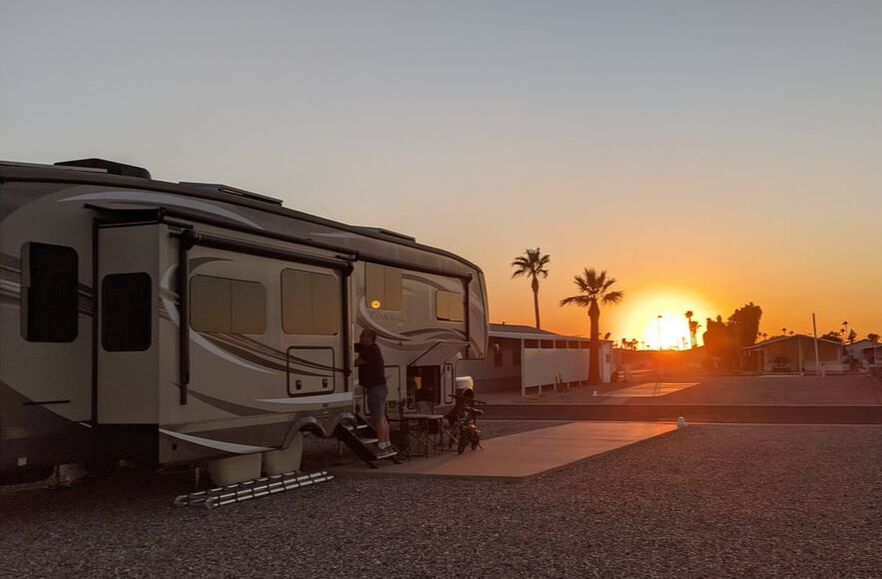
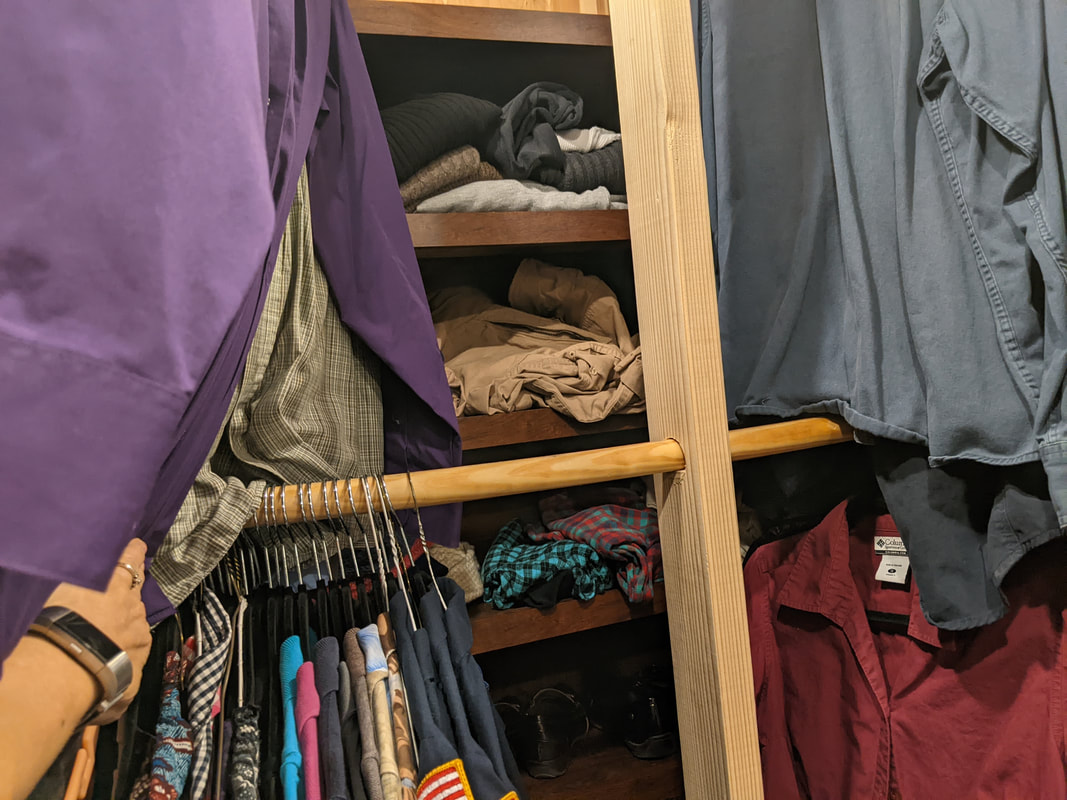
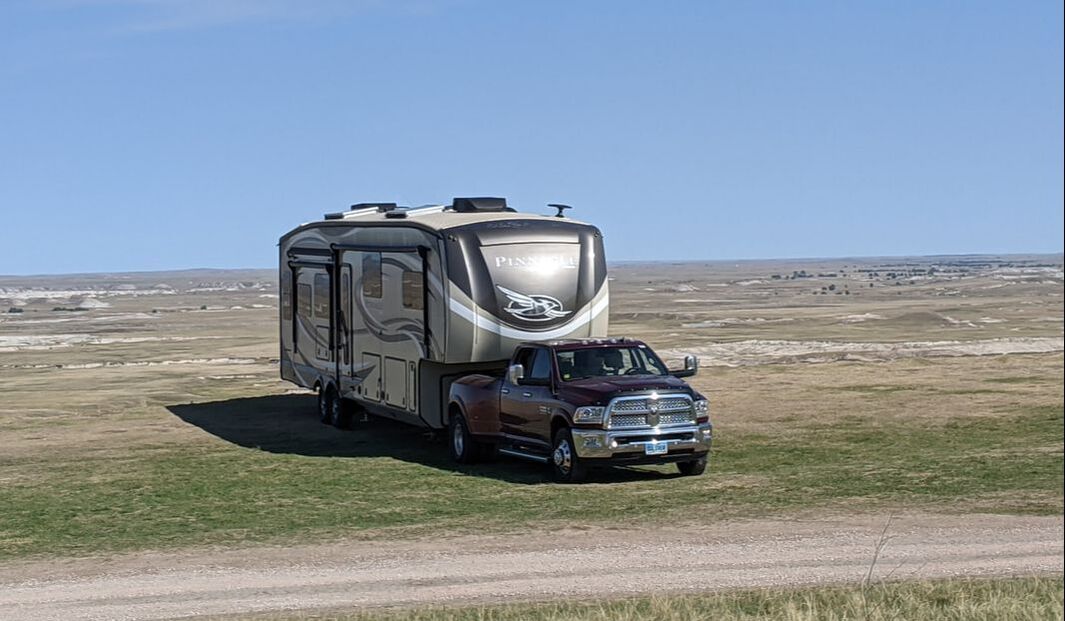
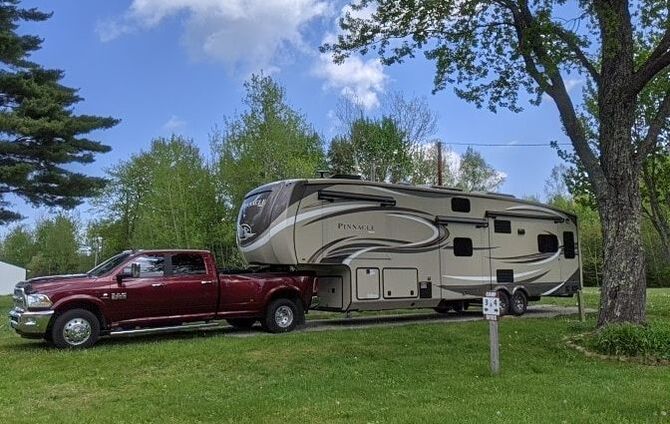
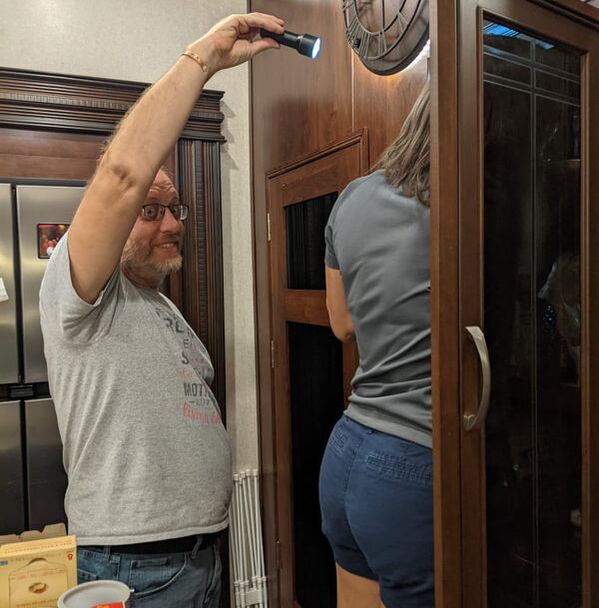
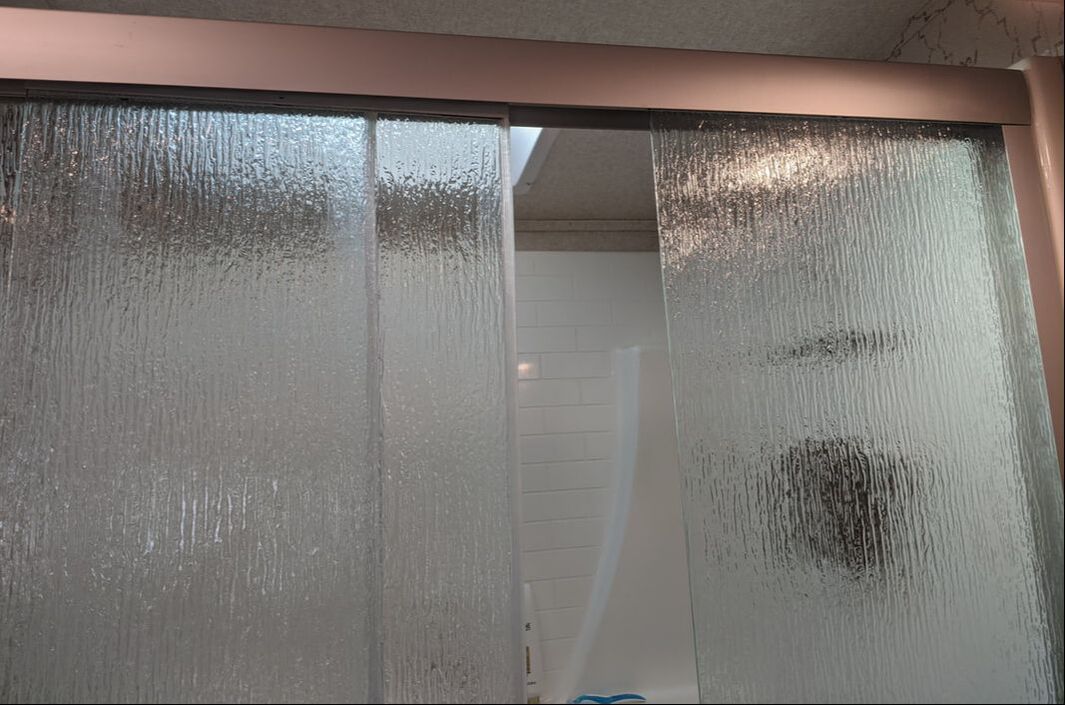
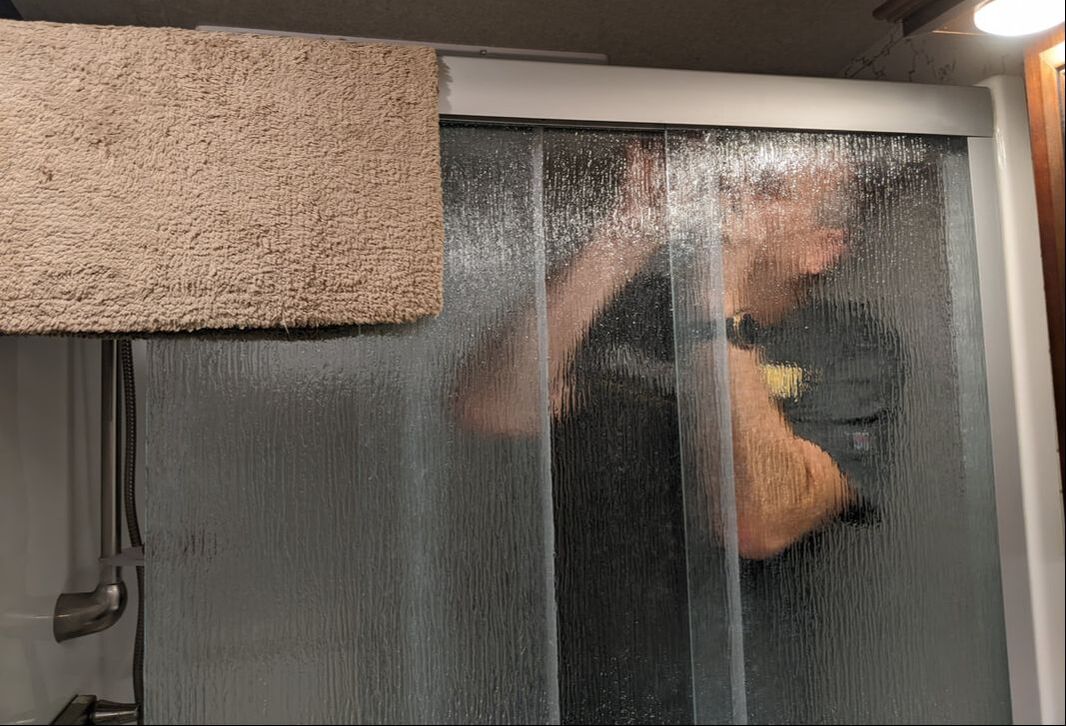
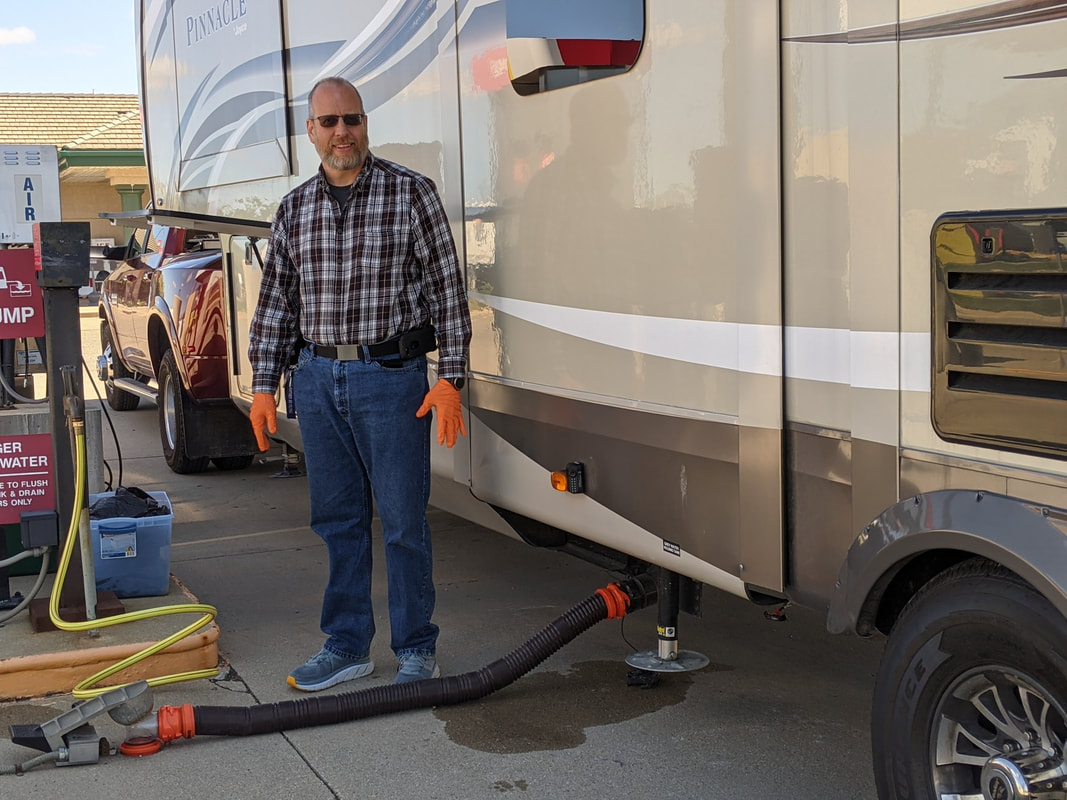
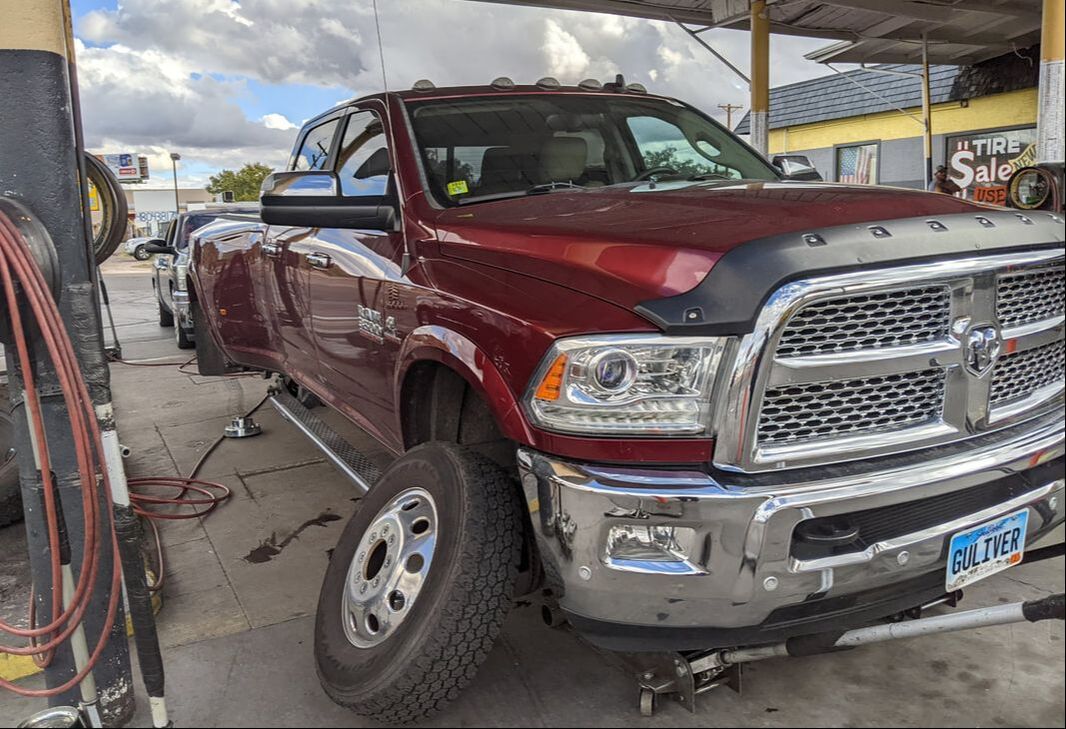
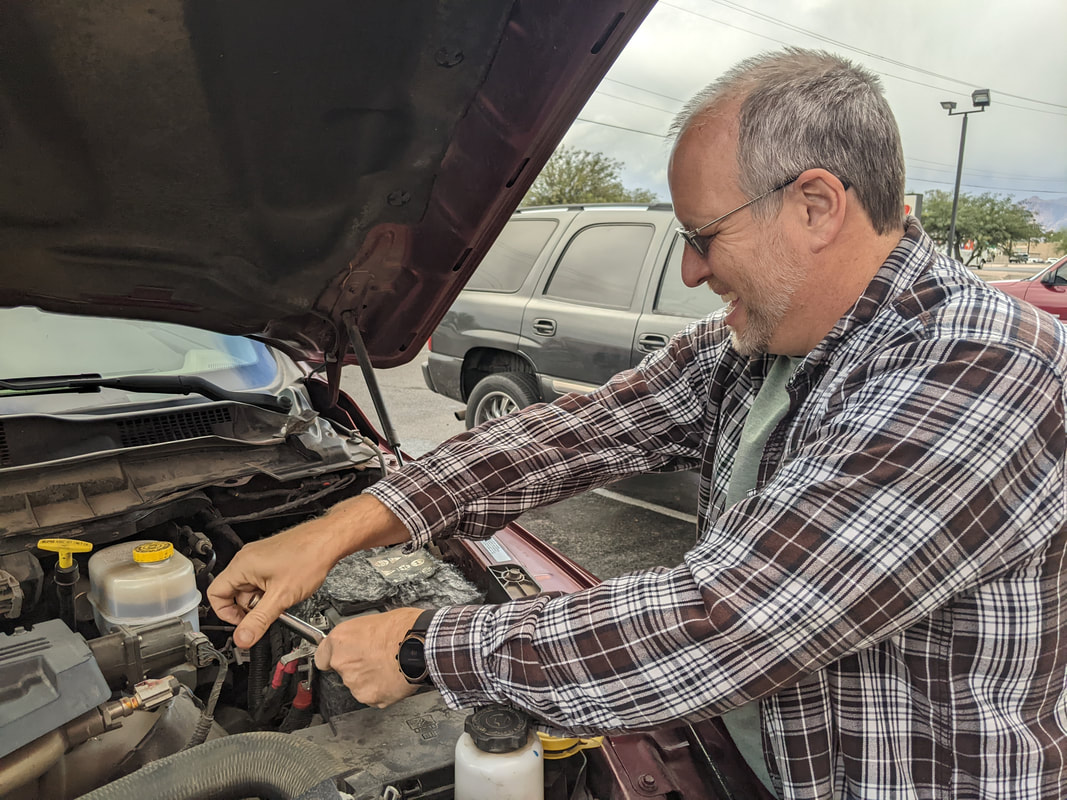
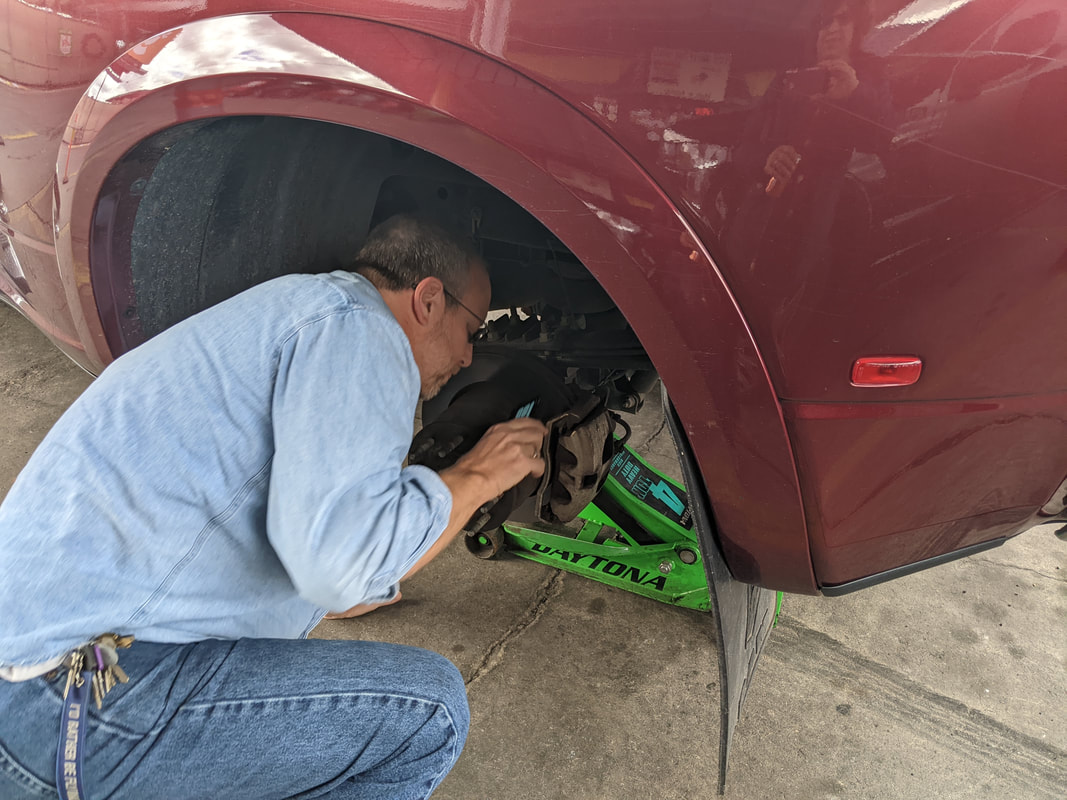
 RSS Feed
RSS Feed